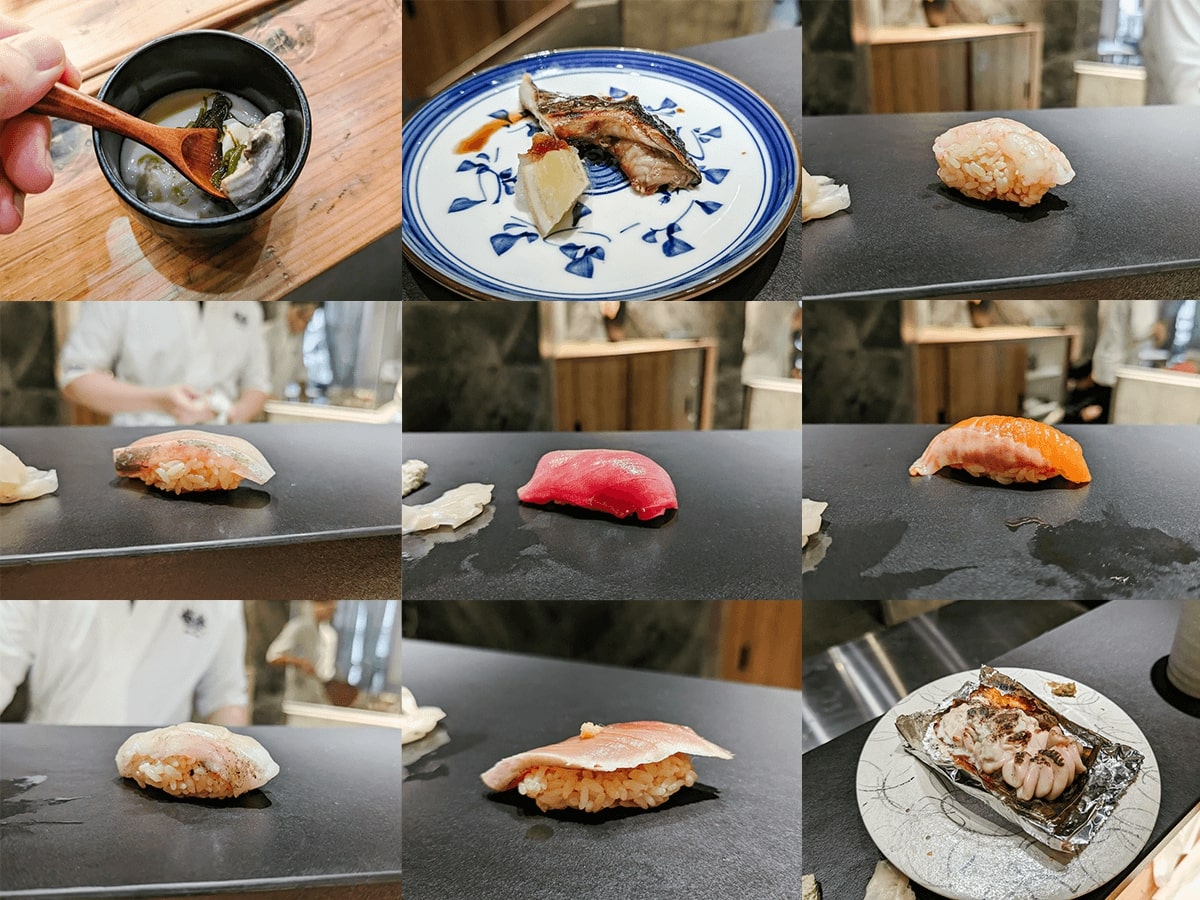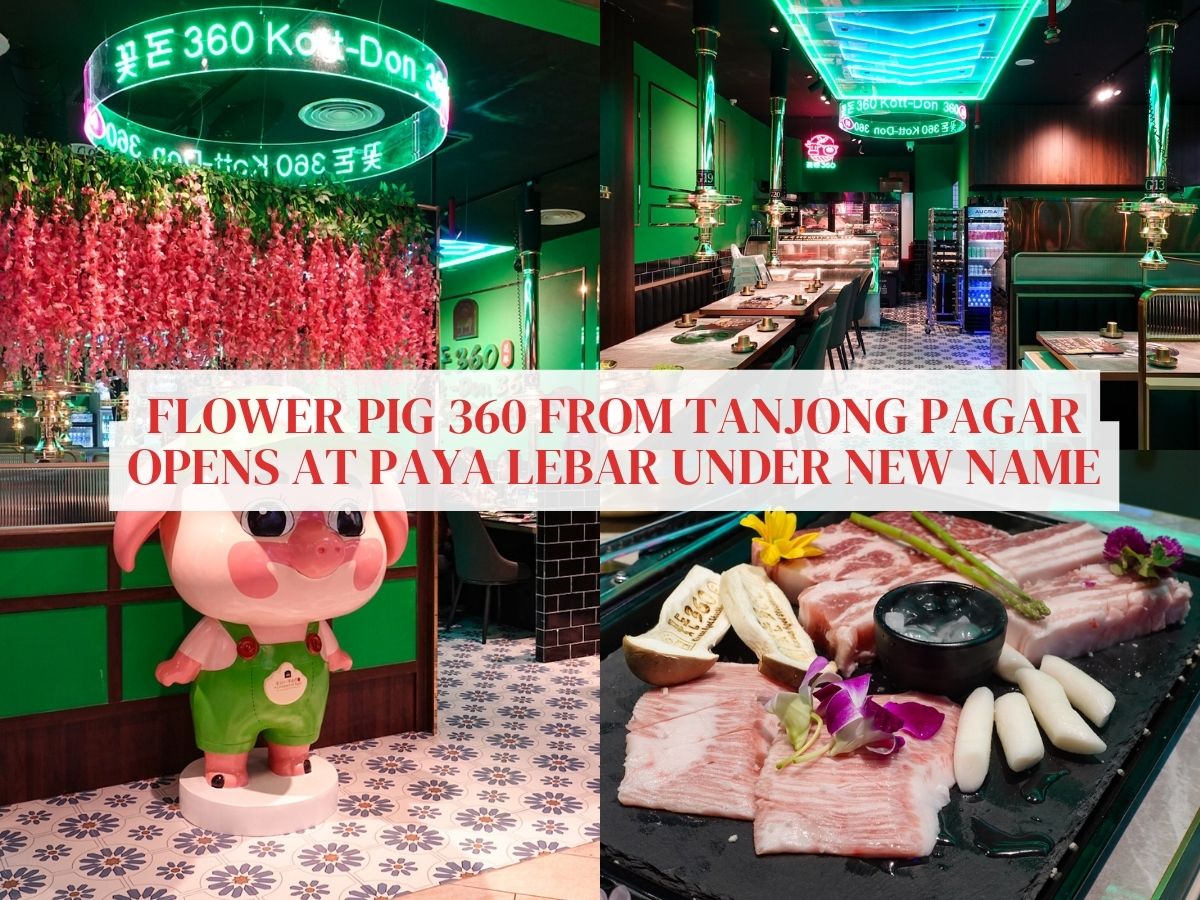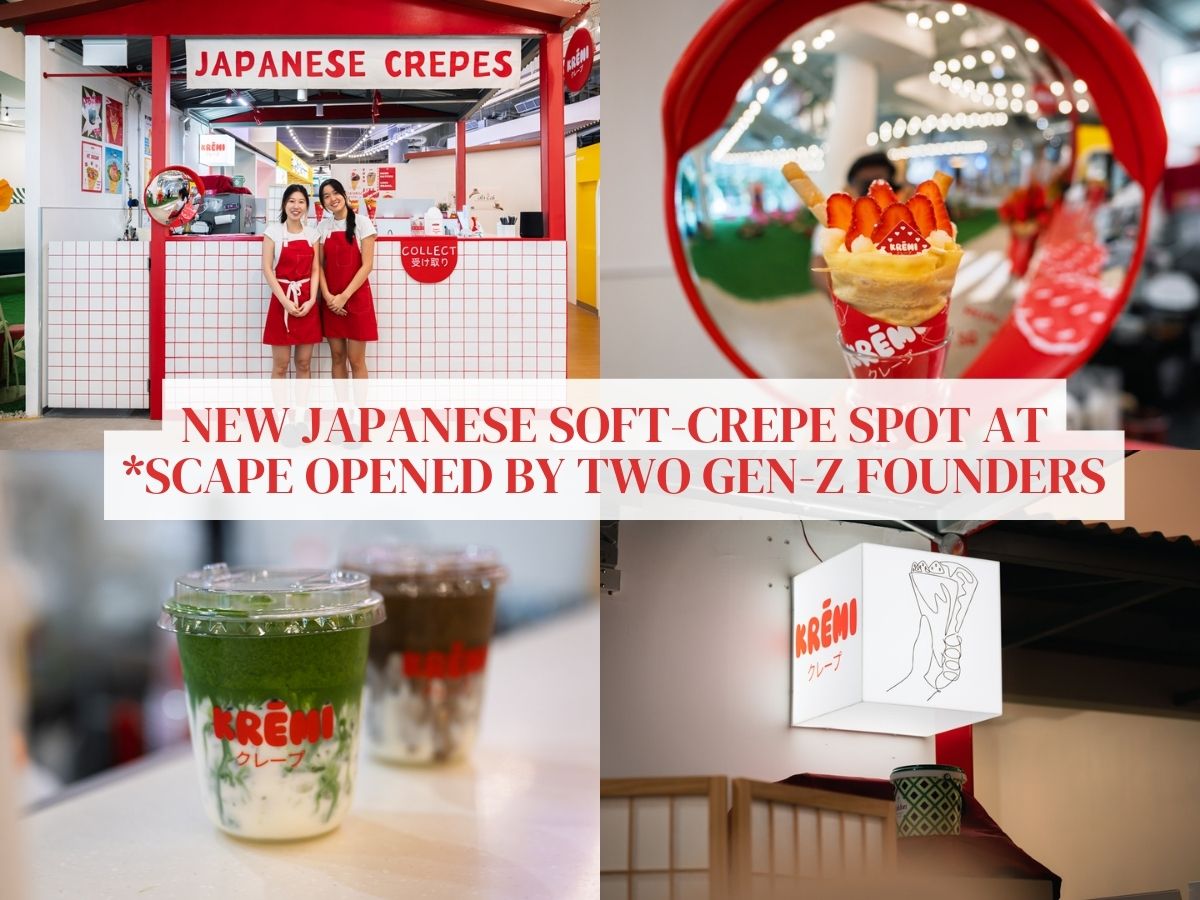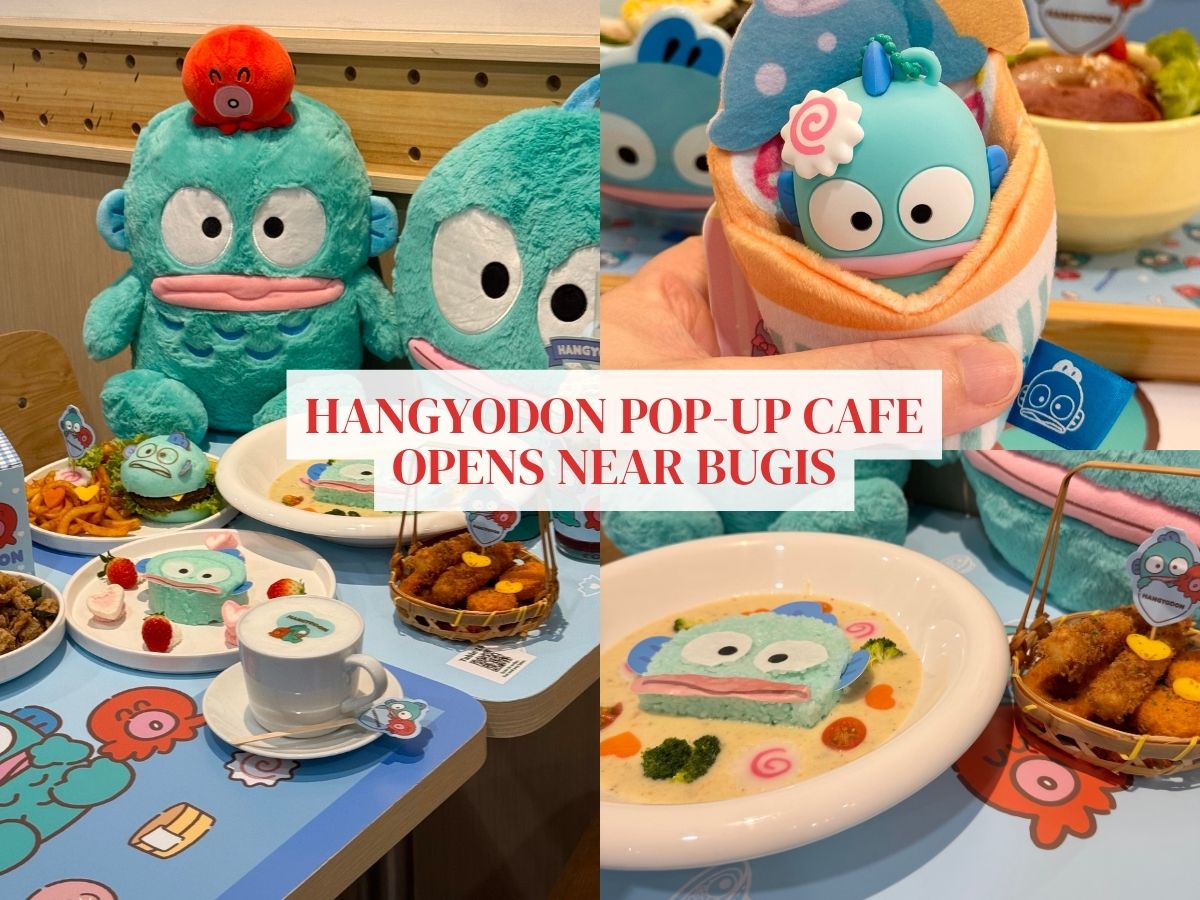Review: Sushi to Sumi has one of Singapore’s cheapest omakases, but lacks essence
- Sushi to Sumi offers a unique and affordable standing omakase experience in Raffles Place
- Three menus are offered for both lunch and dinner (from S$30 and S$50 respectively), with daily a la carte specials available
- Standouts include the torched flounder nigiri and charcoal-grilled shirako
Omakase isn’t just a meal — it’s an experience. The unique elements of omakase — the incredibly fresh ingredients, the creativity of the sushi chef spun from years, if not decades of training, genuine hospitality, and an all-round high-level of dining — are what make it stand out from other experiences.
So to present it in a standing sushi bar concept where the chef prepares the seafood and assembles them on mounds of rice, with the diners standing at the counter right in front of them, is a daring endeavour.
To be fair, the idea has existed in Japan since forever. Singaporeans are probably also familiar with the Standing Sushi Bar brand, which has been around in Bras Basah and in the Downtown area for a while, but a new standing omakase is new and exciting, nonetheless.
The backstory
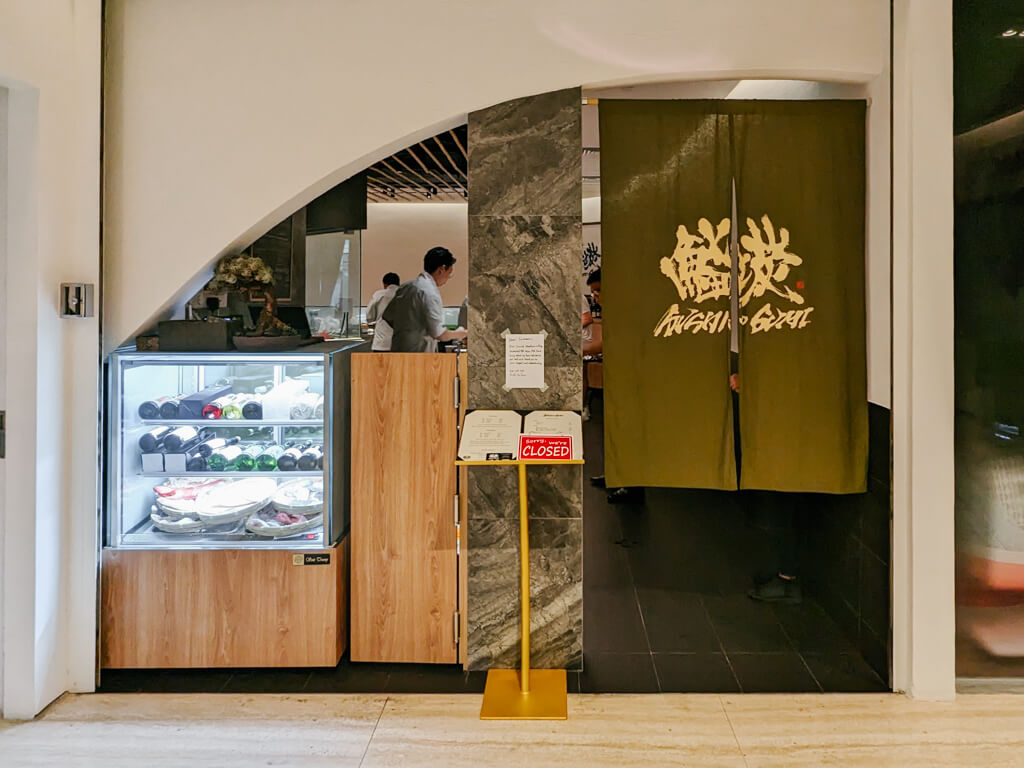
Sushi to Sumi, conveniently located near Raffles Place MRT station, is run by Goodvibes International, a Japanese food distributor and seafood wholesaler that brings in seafood from various small fisheries in Japan.
Clients include notable names like the Michelin-starred Waku Ghin, Esora and Sushi Kimura, so you know the quality is there.

Prices here start from S$30 from a 10-course Ume set during lunch that includes eight pieces of sushi, a grilled fish dish and miso soup; the set goes for S$50 at dinner. You can top up for the Take ($45 for lunch, $80 for dinner) or Matsu ($80 for lunch, $120 for dinner) sets for a deeper exploration of the offerings here.
As you may know, omakase menus change up daily, depending on what’s fresh and available for the day, but you can likely expect popular selections like sweet shrimp, mackerel, flounder, and bluefin tuna, among others.
If you’re visiting during dinner-time, you can also order sushi, sashimi and grilled seafood off its a la carte menu, by referring to a blackboard on the wall.
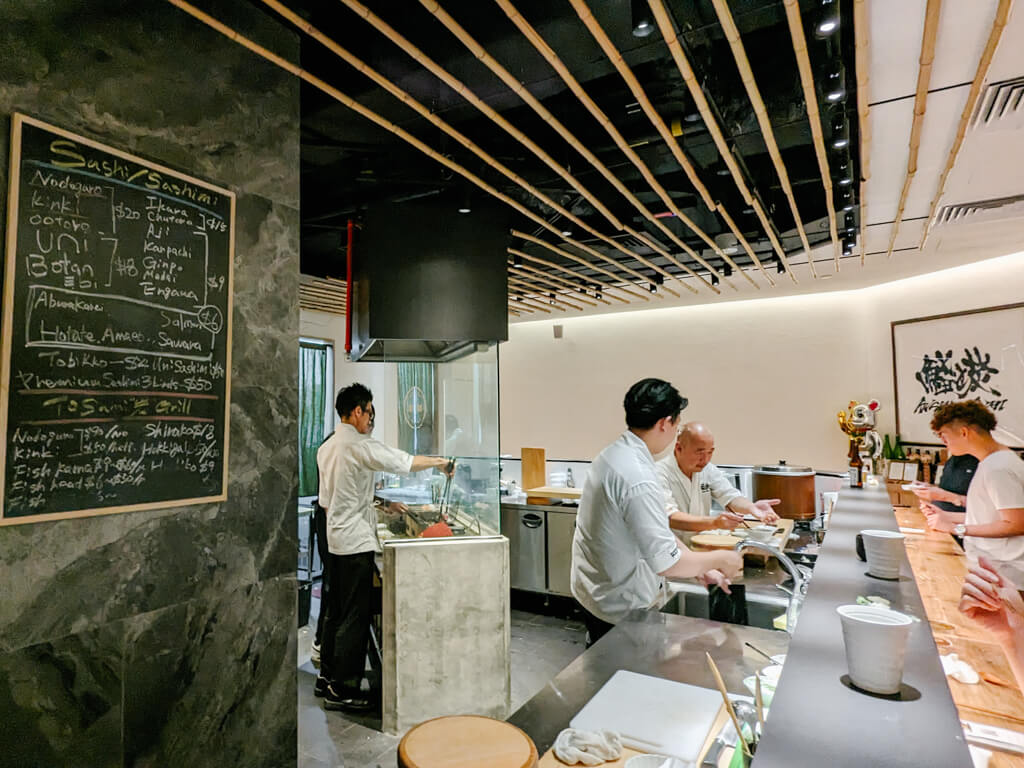
With a no-seats policy, you’ll have to stand around its L-shaped counter during the course of your meal. But don’t worry, you’ll run through the omakase courses here in no time, so you’ll be done even before your legs start to get sore.
Our verdict
If I were to rate Sushi to Sumi purely on food quality, it’d rank somewhat high, but you can’t really judge an omakase meal without considering all the experiential aspects like ambience and hospitality.
Sushi to Sumi may offer one of Singapore’s cheapest omakase meals, but it mostly falls short in terms of experience — it is a lot cheaper than most other spots for a reason. It’s priced somewhere between the shopping mall kaitenzushi (conveyor belt sushi restaurant) and other more affordable omakase places such as Hana Japanese Restaurant and Haku Sushi.
If you’re a CBD warrior who wants a quick, no-frills and affordable omakase to satisfy your sushi cravings, Sushi to Sumi might be worth a visit. Depending on how much you order (across its three sets), you can probably finish your meal in under an hour.
Seasoned omakase diners, though, will probably not find this to be great value.
What it’s good for
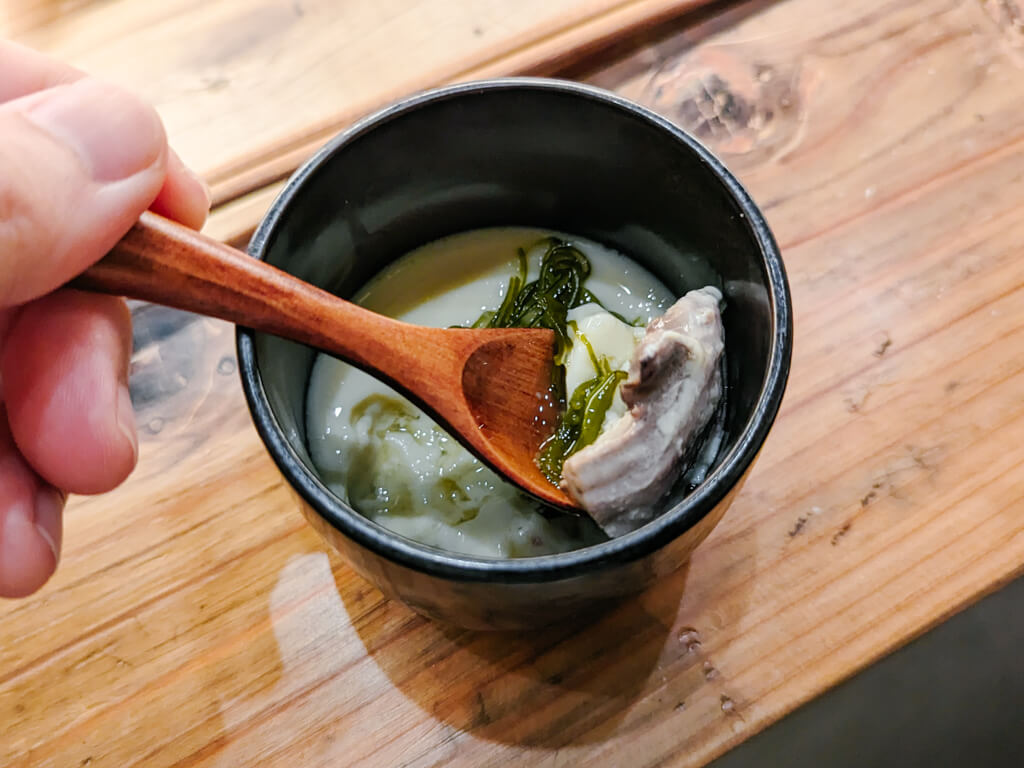
Within a minute of selecting the Ume dinner course (S$50), a pile of housemade pickled ginger is slapped onto the counter in front of me and the meal begins with a bowl of lukewarm chawanmushi — soft and well-steamed with a hint of sweetness and umami. There is a piece of chicken that’s relatively bland and most of the flavour comes from the stringy, briny seaweed. This is a delicate appetiser that sets the tone quite nicely.
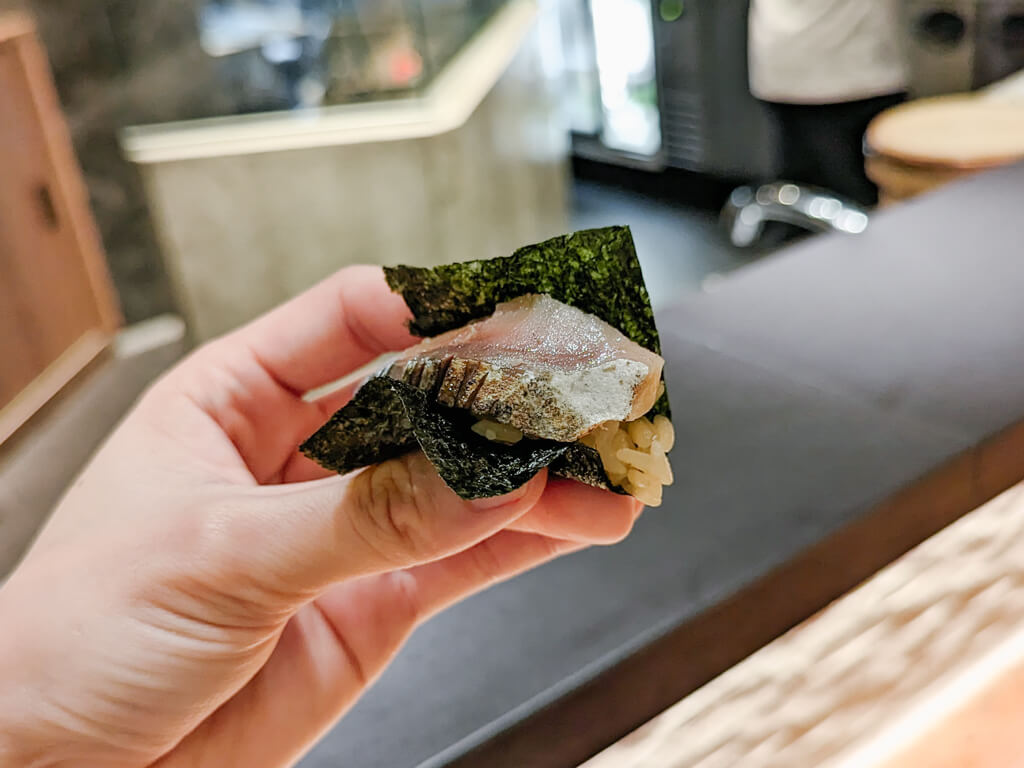
At a good sushi bar, the first piece of fish you are offered tells you whether you’re in for an hour of bliss, or otherwise.
The chef at Sushi to Sumi hands me a small hand roll with a piece of shime saba (cured mackerel) on top. It’s marinated with salt and a bit of rice vinegar, though not so much that it becomes overly firm. Instead, the fish is still a bit soft, letting the natural oiliness and flavour shine through.
The rice has a red-brown tint (a good sign as you know they use red vinegar, which imparts a bit more umami) and comes relatively warm and loosely-packed, but doesn’t fall apart. Things are looking good so far.
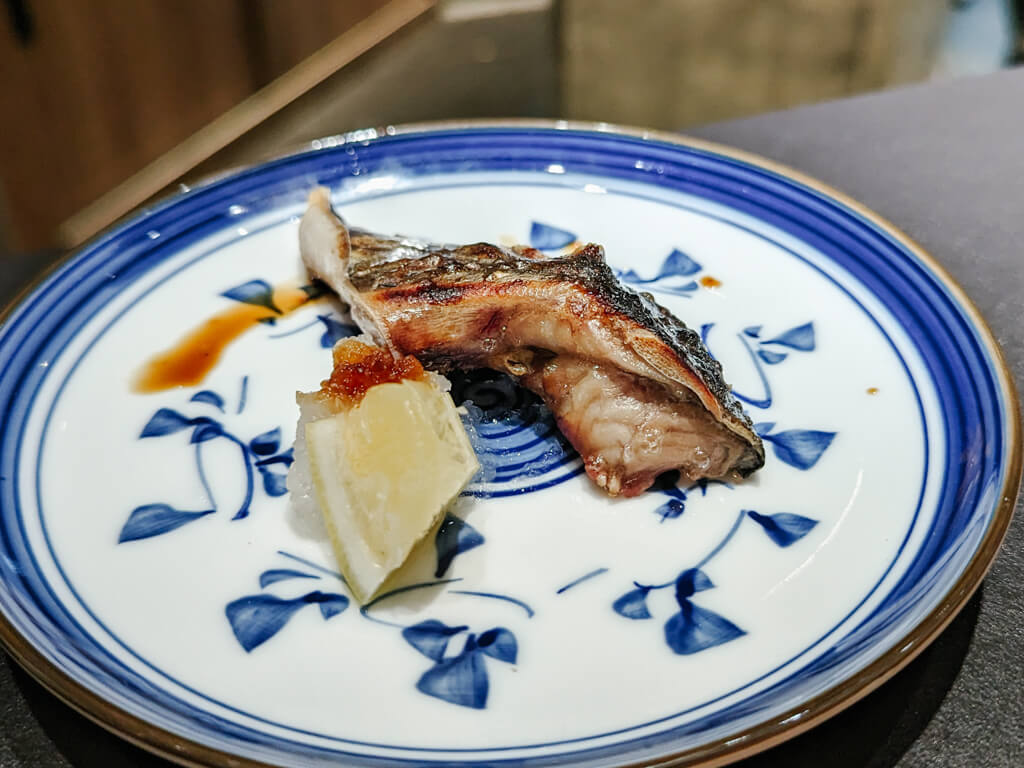
The next dish is a grilled sawara (Spanish mackerel) and a somewhat fatty (read: flavoursome) one, too. Sawara is typically a bit drier and flakier, but the collar is another story altogether. It’s a relatively small piece, but you’re able to dig out a fair bit of rich, delicious meat (and unfortunately some small bones too).
The entire piece is gently cooked over smouldering binchotan charcoal at the back of the restaurant until the skin goes crisp, lacquered with a darkly sweet soy glaze. There’s a piece of lemon that you can use for extra zing, but you don’t really need it.

On to the nigiri sushi. The seafood and fish at Sushi to Sumi are generally just the right size, not too thickly sliced, but not skimpy, either. The amaebi (sweet prawn) comes relatively firm and almost crunchy, with a sweet and creamy taste that lingers on the tongue. It’s not the freshest I’ve had, but cuts pretty close.
There’s a nice, pale-pink piece of kanpachi (greater amberjack) that’s both a bit flaky and meaty at the same time, if that makes sense. The small amount of fat oozes a mix of sweetness and fishiness and there’s a bit of wasabi under the fish that brings out the fish’s buttery flavour.
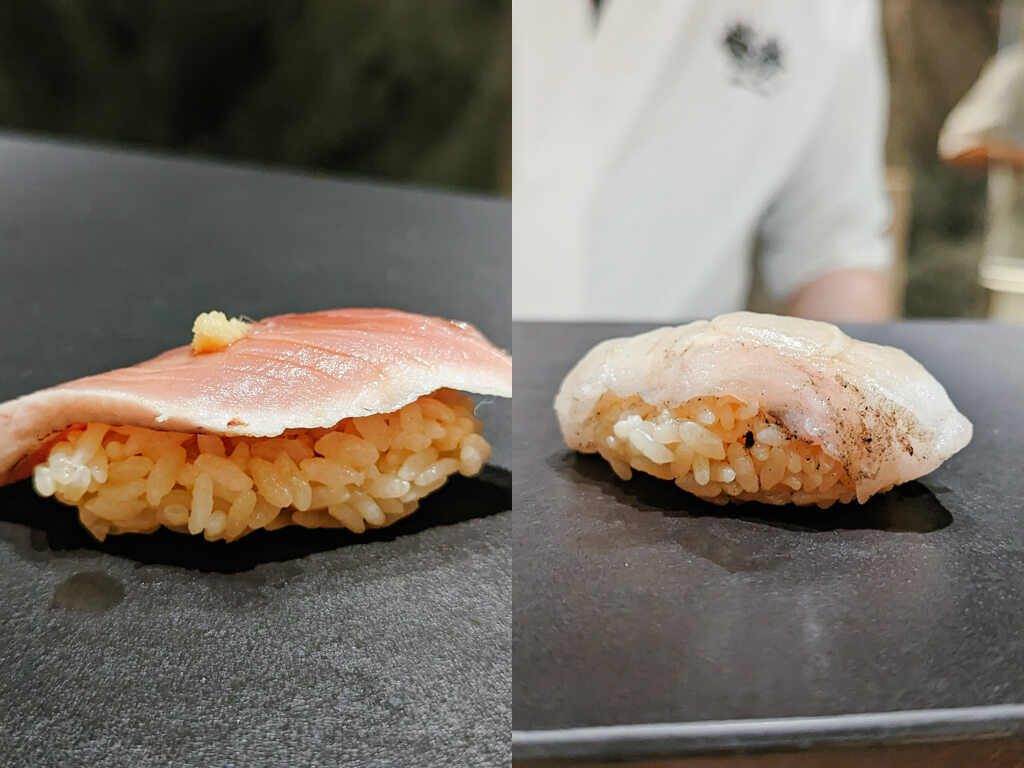
Next, shiro maguro (albacore) is lightly seared and sliced up. It’s somewhat firm and meaty without much fishiness, like what a steak of the sea would taste like, with the slightest bit of acidity from the small pat of grated radish.
I much prefer the torched engawa (flounder fin), which was soft, juicy and flavourful all at once. The smokiness from the charred surface gave it a fabulous depth of flavour — this is my favourite item of my night at Sushi to Sumi.

The final two pieces are classics you’d find at any Japanese restaurant.
The smooth, farm-raised salmon from Japan has relatively low fat content but is full of natural sweetness and umami. It’s a wonderful piece of fish that beats regular conveyor-belt salmon, hands down.
The chutoro (fatty tuna) is a bit of a letdown though — my piece had more lean flesh than fat, which means it lacked that buttery melt-in-your-mouth texture.
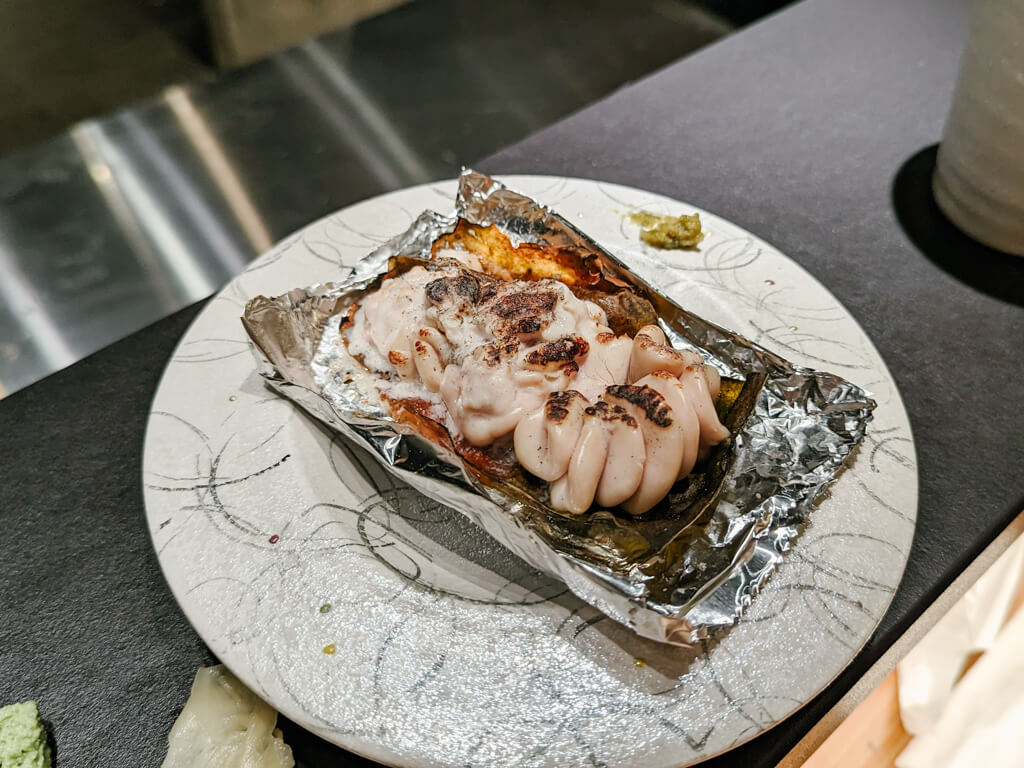
We wash down the sushi with a nice cup of hot matcha (S$2) that’s bright, grassy, and a little earthy, before deciding to order some shirako (S$18) from the a la carte menu.
The cod milt (or fish sperm sac) may turn some people off, but shirako season is ending anytime now, so it’ll be some time before I can enjoy the fresh stuff again. (Many places continue to serve frozen ones.)
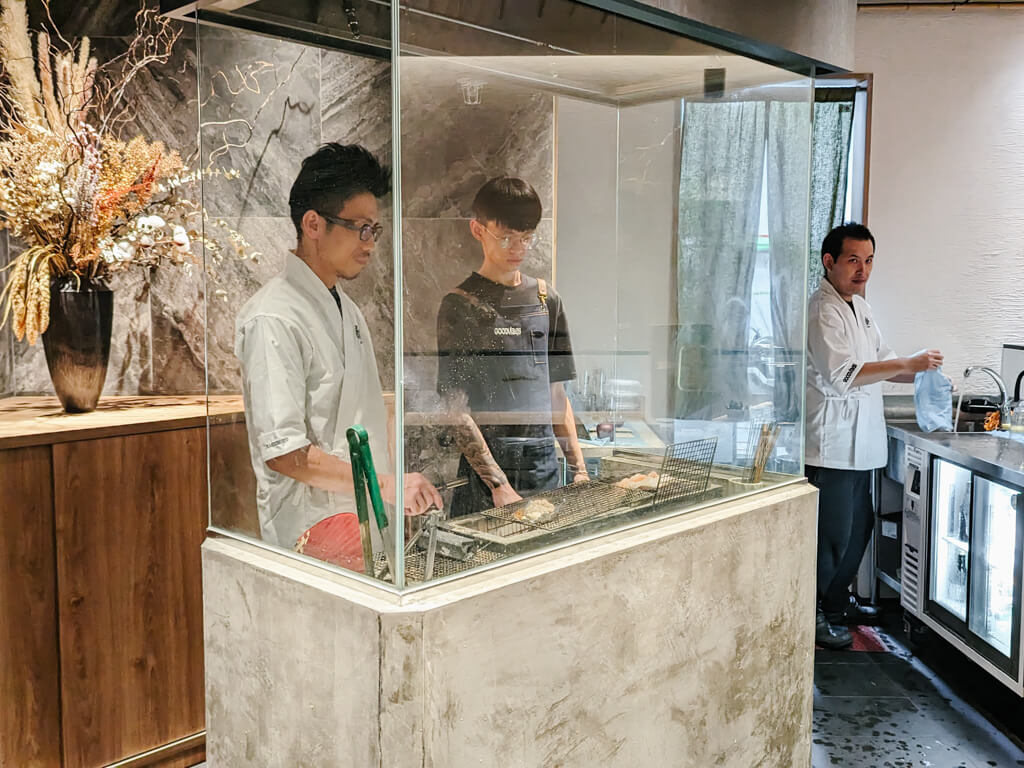
Grilled to order, the shirako is tight and firm on the outside and cuts open to reveal a milky, creamy, and velvety inside that’s akin to fishy and salty cream cheese. It’s an acquired taste but I very much recommend this delicacy.
What it could improve on
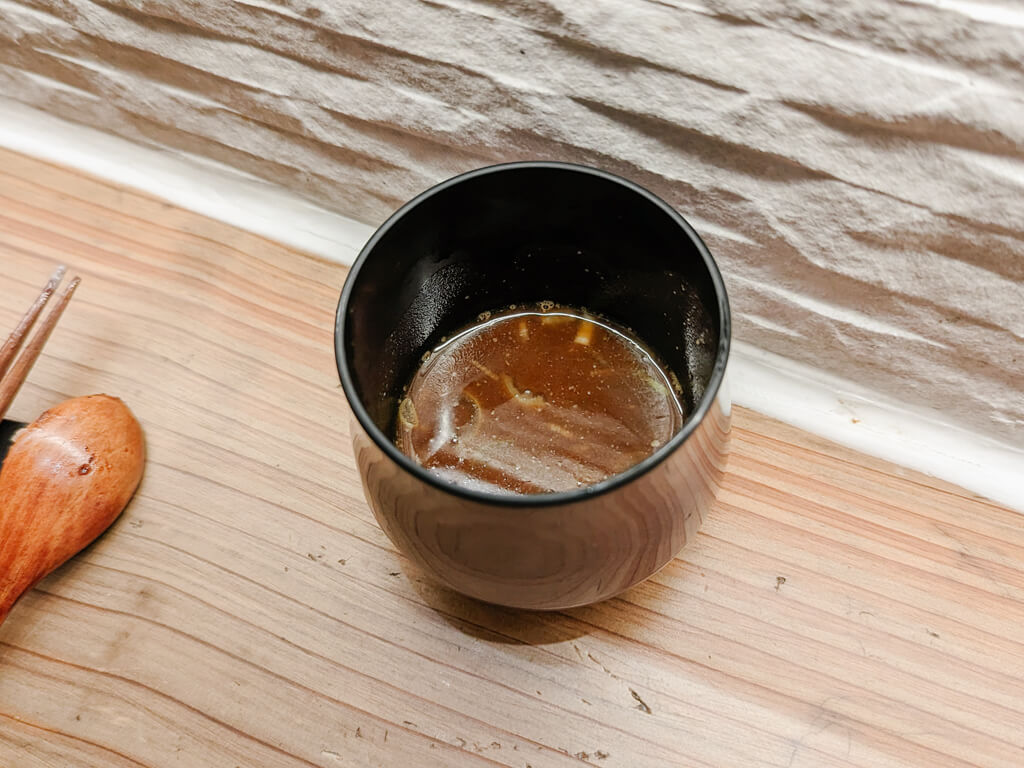
Tiny portion aside —you get less than half of a cup — the prawn miso soup served at the end of the meal tasted intense, but not in a good way. There’s a deep, robust umami prawn flavour, but also a strange bitter aftertaste that lingers in the mouth. The copious amount of sliced spring onions inside don’t help either. Also, where are the miso and prawns in this?
Experience is the main weakness here. The first red flag came when the chef preparing our food didn’t know what the fish served for the grilled dish was. We then asked the more senior chef, who also had to check with someone else.
Then there’s the pacing. Being efficient is one thing, but my meal at Sushi to Sumi felt notably rushed, with multiple courses coming out in the same minute, before you get a chance to finish the ones that came before.
This, combined with loud R&B music in the background and audible chit-chat from the staff, makes it difficult to fully appreciate each dish’s nuances. There’s also not much interaction between the chefs and diners, which is typically one of the main draws of omakase.
Considering I booked the 8pm slot on a weekday night, when more than half of the restaurant was empty, a more relaxed tempo would have allowed for a more enjoyable dinner — my meal ended in less than 40 minutes.
Our quick takes
Is it conducive to conversation? The pace here is fast and you won’t get much time to converse before the next course arrives.
Is a reservation necessary? Highly recommended, or you can chance it if you arrive early for each service.
How to get there? Sushi to Sumi is on the second floor of Plus building, a one-minute walk away from Raffles Place MRT Exit D.
HungryGoWhere paid for its meal at this restaurant for this review.
Want more Japanese food options? Check out Umai, a new artisanal udon bar that’s making waves on social media, and the new vibey Ginkyo by Kinki at One Holland Village.
Do explore the new GrabFood Dine-in service for awesome deals.
You can also book a ride to Umai Artisanal Udon Bar at Gucco Midtown.
Sushi to Sumi
Plus building, 02-01, 20 Cecil Street
Nearest MRT station: Raffles Place
Open: Monday to Friday (11am to 2pm, 5pm to 9pm)
Plus building, 02-01, 20 Cecil Street
Nearest MRT station: Raffles Place
Open: Monday to Friday (11am to 2pm, 5pm to 9pm)
